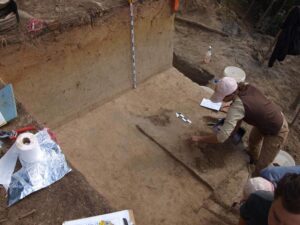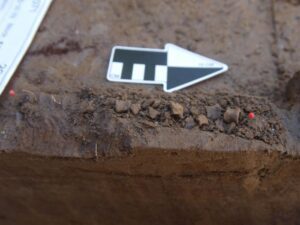
AMERICAN ASSOCIATION FOR THE ADVANCEMENT OF SCIENCE (AAAS)—Native Americans who lived in present-day central Alaska during the last ice age may have started freshwater fishing by around 13,000 years ago, suggests a new analysis* of ancient DNA and stable isotopes from fish remains. Ancestors of Alaska Natives, many of whose livelihoods still depend on freshwater fish such as salmon, may have started subsistence fishing as a response to fewer food resources during long-term climate change, Ben Potter and colleagues say. Native Americans have relied on freshwater fish for thousands of years, but the origins of fishing in North America have been uncertain. Beringia, a region comprising present-day Alaska and Russia, was largely ice-free during the last ice age and is considered a key gateway to the Americas. Researchers have previously discovered well-preserved fish remains in Beringia, but it has been unclear when and how freshwater fishing began there. To investigate, Potter et al. used a combination of DNA and isotope analyses to identify 1,110 fish specimens recovered from six human settlement sites – including in the Tanana, Kuskokwim, Susitna, and Copper River basins – in what was once eastern Beringia (central Alaska). They identified four main fish taxa – salmon, burbot, whitefish, and northern pike – whose earliest appearances dated to around 13,000 and 11,800 years ago. These findings, along with well-documented fishing records from local Native Alaskans, suggest that early Native Americans may have started fishing as a response to environmental change during the Pleistocene-Holocene transition. “Our data collectively suggest that changes in climate and ultimately key mammal resources during the Younger Dryas led to human responses of widening diet breadth to incorporate multiple species of freshwater and anadromous fish, setting a pattern that would be expanded upon later in the Holocene as fish, particularly salmon, became key resources to Alaska Native lifeways,” the authors write.
_____________________________

USR excavation. Ben Potter
_____________________________

Mead Excavation. Ben Potter
_____________________________

Mead articulated burbot vertebrae. Ben Potter
_____________________________
Article Source: AMERICAN ASSOCIATION FOR THE ADVANCEMENT OF SCIENCE (AAAS) news release
Article summary by Nyla Husain
*Freshwater and anadromous fishing in Ice Age Beringia, Science Advances, 2-Jun-2023. www.science.org/doi/10.1126/sciadv.adg6802
_____________________________
Advertisement
_____________________________

Don’t miss out on this unforgettable evening as Dr. Hawass reveals the most closely guarded secrets of ancient Egypt and presents his groundbreaking new discoveries and latest research live on stage. As the man behind all major discoveries in Egypt over the last few decades and director of several ongoing archaeological projects, Dr. Hawass may yet surprise you with unexpected revelations that will make news across the world.
_____________________________




